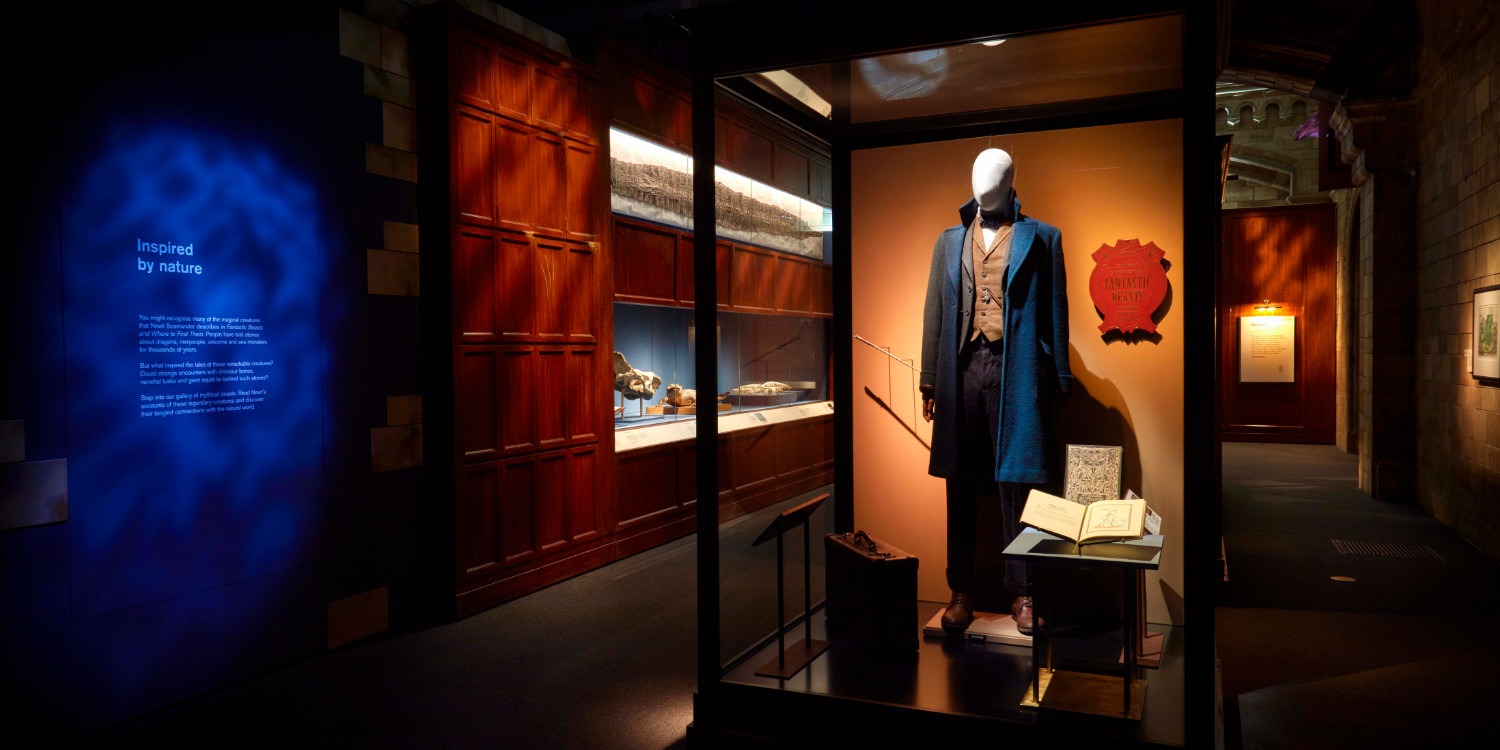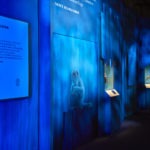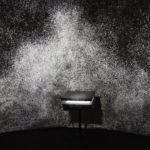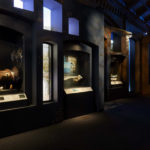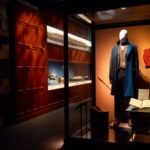TEO: Fantastic Beasts™: The Wonder of Nature is a big exhibition created by your team at the Natural History Museum in collaboration with Warner Bros Discovery, which brings together the magical creatures of the wizarding world and extraordinary animals of our natural world, combining the creative power of cinema and literature with science. What was the motivation behind this project?
Ulrika Danielsson: We jumped at the chance to work with Warner Bros. Discovery to create this exhibition. We saw a great opportunity to display iconic objects from the Fantastic Beasts films side by side with objects from our own collection, and to really use the magical world as a lens through which to look at the natural world. A key motivation for us was to show how real animals are as extraordinary and surprising as the magical beasts in the books and the films that we all love.
This new exhibition gave us the opportunity to raise awareness of the importance of protecting endangered species in the real world, just like the protagonist in the films, Newt Scamander, protects and cares for magical creatures. We wanted to inspire a love for nature and empower our visitors to protect the planet and the animals that we share it with. We are very grateful to Warner Bros. Discovery for their help and support in making the exhibition possible.
In Fantastic Beasts™: The Wonder of Nature, a powerful narrative intertwines stories of creatures from the natural and mythical worlds as well as the wizarding world. Could you tell us about this storytelling approach and some of the fascinating stories it brings to light?
In this exhibition we indeed draw parallels between magical creatures in the books and films and the real animals, highlighting their remarkable abilities and fascinating behaviours. We use some recognisable fantastic beasts as jumping off points to anchor stories about real animals with narratives firmly rooted in science. We take great care to clearly distinguish between the magical world and the real world.
To give an example, we tell the story of the demiguise which can make itself invisible when threatened. We use this magical creature to then look at real-world animals which are also very good at hiding in plain sight, such as the jaguar that camouflages itself with its dark markings, or the cuttlefish that can change colour and texture in seconds to look like a craggy coral or a sandy sea floor. Another example is how we use the mooncalves from the magical world, which are very shy creatures that only emerge at the full moon, to then look at the Canadian lynx, which is so incredibly rare to spot that, to identify it, scientists extract DNA from its footprints in the snow.

We use fantastic beasts as jumping off points to anchor to stories about real animals, with narratives firmly rooted in science.
One of the particularities of the exhibition is how it creates a complete world that visitors enter into. How did you create an immersive space of wonders, and what were your objectives with the creation of such an ambitious visit environment?
We set out to create a design that would immerse the visitor in another world. Visitors start their visit in an enchanted museum gallery, reminiscent of Hogwarts School of Witchcraft and Wizardry, with dark wooden panelling, atmospheric lighting, and cupboard doors and drawers that mysteriously open and close, as if by magic. Then there is a transition into a darkened forest landscape, which moves from night into day, and then onto a surreal indoor space with brick archways and windows into other worlds.
The quality of the setworks and the lighting is incredibly high. The soundscapes, the digital installations, the projected animations, the touch replicas and hands-on exhibits, all these elements contribute to create a magical atmosphere and give the travelling exhibition the illusion of permanence. Provided to hosts as a turnkey experience, the exhibition completely transforms any space it is in. It transports the visitor into a magical world.
Talking about the digital installations and interactive components of the exhibition, particular attention was paid to special effects and mesmerising moments in the experience. Could you share examples of key installations which bring the magic to life?
The exhibition is packed with surprises and special moments. A personal favourite of mine is the bowtruckle tree interactive. On the silhouette of a tree, animations of some fantastic beasts called bowtruckles, act as guardians of the tree, appearing behind the branches to defend the tree when visitors approach. I witnessed a delightful moment in the exhibition when a group of children came together to run towards the tree. The bowtruckles appeared, and the children ran away shrieking with laughter, to then run back again to repeat the experience. It was really lovely to observe.
Another key moment is the finale of the exhibition, a projection which is completely immersive. Real world animals and magical beasts emerge from a suitcase and circle you, and then they dive back into the suitcase. In the show, we have more than 20 hands-on interactives, atmospheric and viewing experiences, soundscapes, and digital experiences. All contribute to this unique magical and immersive experience for the visitor.
The exhibition features an amazing mix of more than 100 exhibits, with a broad selection from the NHM London’s collection.
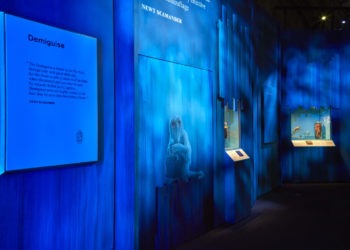
The exhibition travels with an exceptional collection, which brings together specimens and objects from the Natural History Museum London’s collections, props from the Harry Potter™ and Fantastic Beasts™ franchises, full scale models and works on paper. Can you please tell us more about the natural history collections on display?
The exhibition features an amazing mix of more than 100 exhibits, with a broad selection from the NHM London’s collection. For example, in a dedicated explorer’s hut we tell the story of explorers and naturalists, who like Newt Scamander travelled the world studying animals and habitats. To support these stories, we present objects from our collection, such as an explorer’s kit used by botanist Nicholas Polunin and a beautiful sketchbook detailing the life stages of butterflies by collector Margaret Fountaine.
In a section dedicated to the importance of protecting endangered species, we shine a light on efforts by conservationists in New Zealand to save and increase the number of the endangered kākāpō, a flightless nocturnal parrot that came close to extinction in the 20th century. We display equipment specially developed to help monitor the health and location of each kākāpō, including 3D printed smart eggs. Conservationists remove kākāpō eggs from nests so they can be cared for and incubated safely, leaving the smart eggs in their place so that kākāpō mothers can prepare for the arrival of their young.
In the context of exploring the mythology of merpeople, we also display a guitarfish twisted into a mermaid-like form, where string has been used to create a neck and head resembling that of a human. From the 1600s onwards, these strange creatures, known as Jenny Hanivers, were sometimes brought home by sailors who claimed they were mythical beasts.
What kind of collections related to the Harry Potter™ and Fantastic Beasts™ books and films are these natural history collections presented with?
The experience features an exceptional selection of iconic props from the Harry Potter™ and Fantastic Beasts™ franchises, as well as full scale models that were produced exclusively for the show, including an enormous head of a Hungarian horntail dragon. We also have beautiful works on paper, including original illustrations from the Bloomsbury Group.
We open the exhibition with a showcase dedicated to Newt Scamander, featuring his costume and wand from the Fantastic Beasts™ films. Further along we display wands containing unicorn hair belonging to Remus Lupin, Draco Malfoy and Ron Weasley from the Harry Potter™ film series.
We also have the 1.5 m long Erumpent horn that featured in the film Harry Potter™ and the Deathly Hallows – Part 1. In the wizarding world, horn is used as an ingredient in potions. The Erumpent horn is part of a story where we look at the importance of protecting beasts threatened by trade.
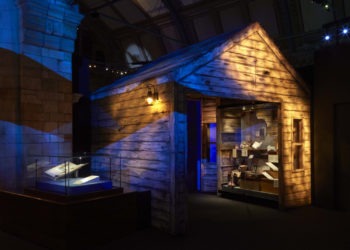
The stories fascinate all ages, the design enthrals, and we have noticed that both adults and children really enjoy the interactivity and surprises around every corner.
Who was the target audience for the exhibition? How did the visitors effectively engage with the show?
The target audience is families with children, fans of the Harry Potter™ and Fantastic Beasts™ books and movies, of course, all those who have at heart our planet’s biodiversity and conservation. The exhibition has a really broad appeal. The stories fascinate all ages, the design enthrals, and we have noticed that both adults and children really enjoy the interactivity, and how there are surprises around every corner and so many moments to stop and enjoy. The dwell time has been very good, and we see in the show that everyone appreciates the magic and engages very well with the interwoven natural history content.
The exhibition is touring globally. Could you tell us about the international tour and what is coming up next for the exhibition?
The exhibition started its tour at the ROM, the Royal Ontario Museum in Toronto (Canada) in 2022, and has since been displayed at Melbourne Museum in Melbourne (Australia) and at the Chiang Kai-shek Memorial Hall in Taipei (Taiwan). Partners have been very happy with visitation figures and retail sales in their dedicated exhibition stores, which included the official ‘Fantastic Beasts™: The Wonder of Nature’ product ranges, developed by the NHM, and several exhibition-related Warner Bros. Discovery licensed products. Now, after three tour venues and over half a million visits, we are taking some time for maintenance before continuing the tour. We are currently looking for partners for 2026 and 2027.
Our museum had the distinct pleasure of being the premiere venue to host the "Fantastic Beasts™: The Wonder of Nature" exhibition. The exhibition was a hit with our audiences, appealing to visitors of all ages and creating an immersive and magical experience that sparked wonder and excitement. We value our partnership and collaboration with the Natural History Museum. Their professionalism, expertise, and dedication were instrumental in ensuring a smooth and successful opening.
Maria Piacente
Senior Vice President, Exhibition & Gallery Planning at Royal Ontario Museum
Exhibition mentioned
Fantastic Beasts™: The Wonder of Nature, by Natural History Museum London
About the authors & contributors
Teo is the global resource for the international touring exhibitions community. Created for hosts, producers and suppliers of international touring exhibitions, Teo is a global living resource for sharing best practices and fostering new international collaborations in the world of travelling exhibits.

Ulrika Danielsson
Ulrika Danielsson is Head of Global Touring at the Natural History Museum in London. The Natural History Museum has been touring its ground-breaking exhibitions since 1990. They include the prestigious Wildlife Photographer of the Year and the very best of their unique and varied collection of over 80 million specimens, underpinned by their inspiring science and research. Through their touring programme we look to create a sense of wonder for the natural world and to engage in dialogue globally about creating a future where people and planet thrive.


